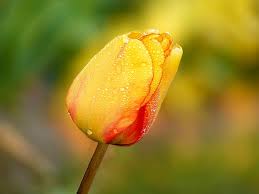Natural Elements like Water and Greenery in Palace Design: The Symbolism and Functionality in Imperial Architecture

Throughout history, the design and construction of palaces have been influenced by a deep understanding of nature’s role in shaping human experience. In imperial architecture, particularly in Chinese palaces, natural elements such as water and greenery were not only used for aesthetic purposes but were deeply intertwined with cultural beliefs, philosophy, and the ruler’s connection to the natural world. The use of water, plants, and trees in palace design was seen as more than decoration; these elements were believed to have powerful symbolic meanings and were often carefully chosen to promote harmony, prosperity, and balance.
In this article, we will explore how natural elements such as water and greenery have played a vital role in the design of Chinese palaces. We will examine how these elements have been integrated into the architecture and gardens of some of the most iconic palaces, such as the Forbidden City in Beijing, and how they symbolize the ideals of feng shui, Taoism, and Confucianism. Furthermore, we will explore the dual role of these elements in palace design: both functional and symbolic.
1. The Role of Water in Palace Design: Symbolism and Functionality
Water has always held profound significance in Chinese culture, often representing life, prosperity, and balance. In palace design, water features were used not only to enhance the beauty of the landscape but also to cultivate a harmonious atmosphere. Whether in the form of pools, ponds, streams, or fountains, water was an essential part of Chinese imperial gardens and palaces, chosen with care to complement the architectural layout and reflect the emperor’s connection to nature and the cosmos.
1.1 Symbolism of Water in Chinese Culture
In Chinese philosophy, water is associated with the Yin element, representing qualities such as gentleness, fluidity, and nourishment. It is also seen as a symbol of abundance and prosperity, as well as a medium through which positive energy or qi is believed to flow. The careful placement of water in palace gardens was thought to influence the flow of energy throughout the palace, bringing good fortune and maintaining the emperor’s health and the empire’s stability.
Water is also often seen as a symbol of purity and cleansing. In imperial palaces, water features helped to promote a sense of serenity and peace, essential for the ruler’s reflection and decision-making. The calm sound of flowing water was believed to have a soothing effect on the mind, aiding the emperor in governance and creating an environment conducive to introspection and wisdom.
1.2 Water in the Forbidden City
The Forbidden City, home to Chinese emperors for over five centuries, is a prime example of how water was incorporated into palace design. One of the most notable water features within the Forbidden City is the golden water river, a shallow waterway that runs through the complex. This river symbolizes the emperor’s control over the natural world and the harmonious relationship between the palace and the natural environment.
The Forbidden City also includes several ponds and gardens that feature water, with the most famous being the Imperial Garden. Here, rockeries and trees are combined with water to create a peaceful retreat for the emperor and his family. The natural beauty of the space was meant to reflect the emperor’s power as the Son of Heaven, a ruler whose authority was believed to be in alignment with cosmic forces.
The use of water in these designs wasn’t just for ornamental purposes. In traditional feng shui, the flow of water was considered essential for creating a balance of energy. The direction and placement of water features were carefully chosen to allow for the optimal flow of qi throughout the space, thus ensuring the prosperity and longevity of the emperor’s reign.
1.3 Water Features and Feng Shui
Water features in palace design were a significant component of feng shui, a Chinese philosophical system concerned with the arrangement of objects and spaces to promote harmony with the natural world. In feng shui, water represents the element of wealth and prosperity, and the careful positioning of water features was believed to enhance the flow of positive energy.
For example, in the Forbidden City, the placement of the golden water river was designed to create a gentle flow of energy around the imperial palace, ensuring that the ruler’s decisions were made in a space filled with favorable energy. Similarly, ponds and streams were strategically placed to enhance the balance of yin and yang, the opposites that are believed to govern the world’s natural forces.
2. The Role of Greenery in Palace Design: Symbolism and Aesthetic Appeal
Greenery, including trees, shrubs, and flowers, played a critical role in the aesthetic and symbolic design of Chinese palaces. In addition to their natural beauty, plants were seen as symbols of strength, resilience, and vitality. The careful integration of greenery into palace architecture and gardens reflected the emperor’s commitment to maintaining harmony with nature.
2.1 Symbolism of Trees and Plants
In Chinese culture, certain plants have deep symbolic meanings, and they were chosen with great care to reflect specific virtues and ideals. For instance, pine trees symbolize longevity and endurance, while bamboo is associated with strength, flexibility, and resilience. Peonies, on the other hand, represent prosperity and good fortune. These symbolic plants were often used in palace gardens to not only create a pleasing atmosphere but also to send a message about the emperor’s power, resilience, and ability to bring prosperity to his people.
In Chinese philosophy, the relationship between human beings and nature is viewed as interdependent. Thus, the selection of trees and plants in the palace gardens often reflected the emperor’s role as a ruler who was in tune with nature and responsible for maintaining the delicate balance between heaven and earth.
2.2 Greenery in the Forbidden City
The Imperial Garden in the Forbidden City is one of the most famous examples of how greenery was integrated into palace design. This lush garden features an array of trees, bushes, and flowers, carefully arranged to create a peaceful, harmonious environment. Among the most prominent plants in the garden are pine trees, which represent the emperor’s enduring rule, and bamboo, a symbol of flexibility and resilience.
In addition to its aesthetic role, the garden also had a symbolic function. It was believed that the emperor’s power, like the trees in the garden, was nurtured and protected by the natural forces. The plants within the Imperial Garden served as a visual representation of the emperor’s connection to nature, reinforcing the idea that a ruler who respects the natural world will be able to govern effectively and maintain harmony in the empire.
2.3 Symbolic Role of Greenery in Taoism and Confucianism
In Taoism, greenery and plants were often used to represent the principle of wu wei, which means “non-action” or “effortless action.” The use of plants in palace gardens was intended to remind the emperor of the natural flow of life and the importance of aligning oneself with this flow. Taoists believe that by working in harmony with nature, one can achieve peace, balance, and success.
Confucianism, on the other hand, emphasizes the importance of duty, righteousness, and virtue. The careful cultivation of plants in the palace garden was a reflection of the emperor’s responsibility to nurture the empire, just as one would tend to a garden. The plants were a metaphor for the ruler’s obligation to foster prosperity, longevity, and harmony in his kingdom.
3. Water and Greenery as Symbols of Governance and Power
In addition to their symbolic roles, water and greenery in palace gardens also served as reminders of the emperor’s power and responsibilities. By integrating these elements into the design of the palace, the emperor demonstrated his ability to control and harmonize the natural world. These features were a visual representation of the emperor’s role as the Son of Heaven, a ruler who governed with divine approval and was responsible for maintaining balance in the empire.
3.1 Greenery and the Emperor’s Authority
The presence of lush greenery in palace gardens also highlighted the emperor’s role as the protector and nurturer of the empire. Just as the emperor was expected to care for and protect his people, he was also responsible for cultivating a harmonious relationship with nature. The well-maintained palace gardens, with their carefully chosen plants, served as a reflection of the emperor’s capacity for stewardship and leadership.
3.2 Water as a Representation of Wealth and Prosperity
Similarly, water features were seen as symbols of wealth and prosperity, both for the emperor personally and for the empire as a whole. In Chinese culture, water is believed to attract positive energy, and its presence in the palace gardens was thought to ensure the emperor’s success in both governance and personal well-being. The use of water as a symbol of abundance further reinforced the emperor’s role as a provider and protector of his people.
4. Conclusion: The Lasting Impact of Natural Elements in Palace Design
The integration of natural elements like water and greenery in Chinese palaces is not just a design choice but a profound reflection of the cultural, philosophical, and symbolic values that shaped imperial governance. Through the use of water and plants, the emperor’s connection to nature, his power, and his responsibility to the empire were all reinforced. These elements worked in harmony to create not only beautiful and tranquil environments but also spaces imbued with deep cultural meaning.
Today, the legacy of these designs continues to inspire architectural practices that seek to harmonize human spaces with the natural world
. The role of water and greenery in palace design remains a testament to the enduring influence of nature on human culture and the wisdom of integrating these elements into the very fabric of our built environment.

